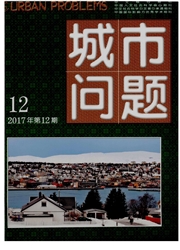

 中文摘要:
中文摘要:
从城市建设的角度分析了城镇化质量对碳排放的影响,基于地理学第一定律和空间相互作用定理分析了城市间碳排放的空间效应,使用长三角16个核心城市的经验数据进行了数据分析,并运用空间计量模型和STIRPAT模型实证检验了碳排放的空间效应及城镇化质量对碳排放的影响效果。结果显示:长三角各城市碳排放存在空间效应,且城镇化质量与碳排放存在负相关关系;城镇化质量指数每提高1%,碳排放量约减少1.8%;碳排放的空间溢出效应与城镇化质量对碳排放负向影响的相互作用会产生复杂的反馈效应;通过空间效应和反馈效应的综合利用能够实现城市碳减排。在此基础上,提出了构建城市空间圈层结构,以此提升长三角城镇化质量和降低碳排放的建议。
 英文摘要:
英文摘要:
This essay studies on the influence of urbani- zation quality on carbon emission from the perspective of urban construction. Basedurban carbon emission is a on the First Law of Geography and Spatial Interaction Theory, the spatial effect of nalyzed. Based on the data of 16 core cities of the Yangtze River Delta, the data are analyzed, and the spatial effect of carbon emission and the effect of urbanization quality on carbon emission are tested by using Spatial Econometric Model and STIR- PAT Model. The results show that there is spatial effect of carbon emissions between the cities of the Yangtze River Delta, and there is a negative correlation between urbanization quality and carbon emission, urbanization quality index increases by 1%, carbon emissions will decrease by about 1.8% ; The interaction between the spatial spillover effect of carbon emission and the negative impact of urbanization quality on carbon emission will produce a complex feedback effect, the comprehensive utilization of the spatial effect and the feedback effect can realize the urban carbon emission reduction. Finally this essay provides decision - making reference for China' s urbanization construction and carbon emission reduction.
 同期刊论文项目
同期刊论文项目
 同项目期刊论文
同项目期刊论文
 期刊信息
期刊信息
